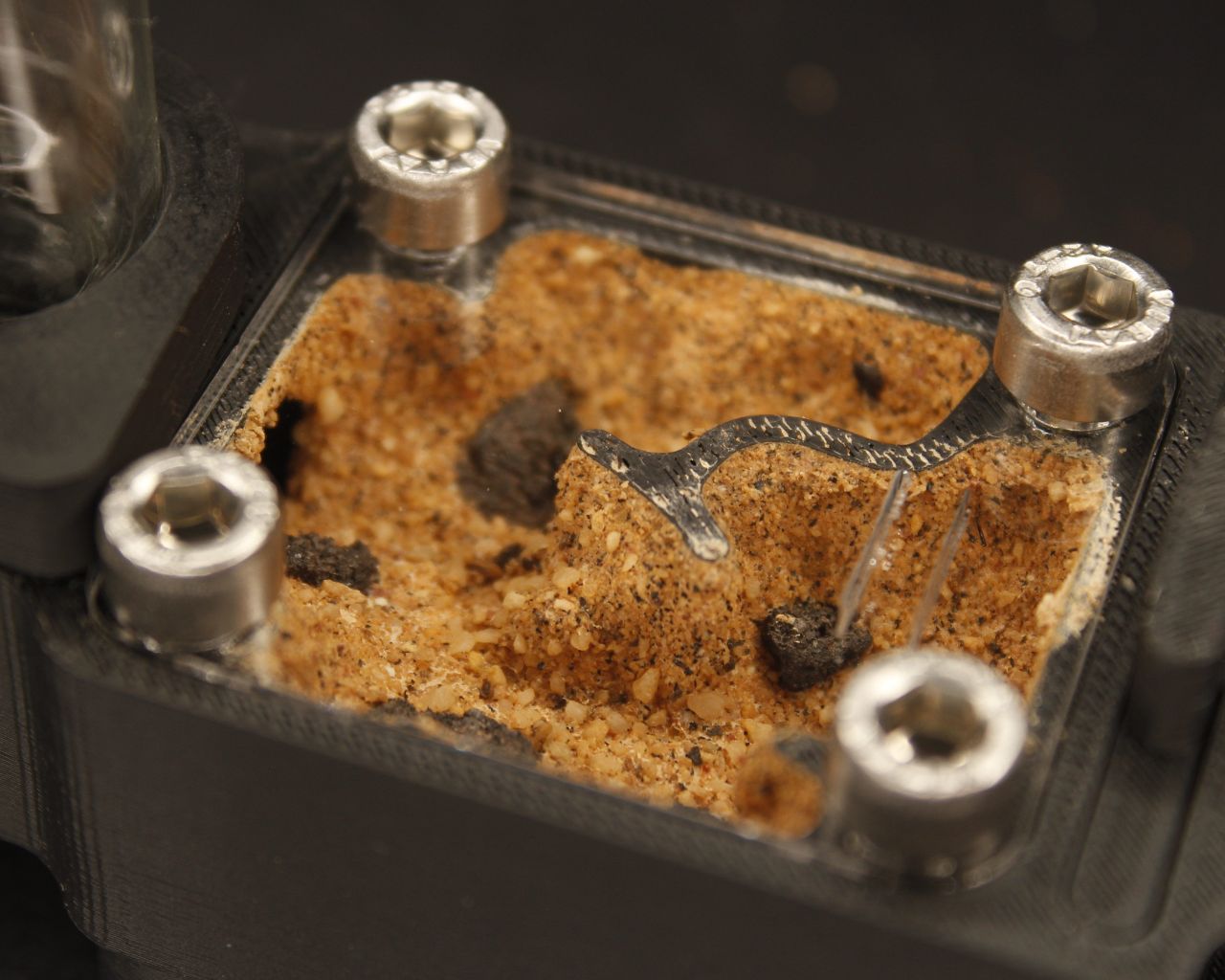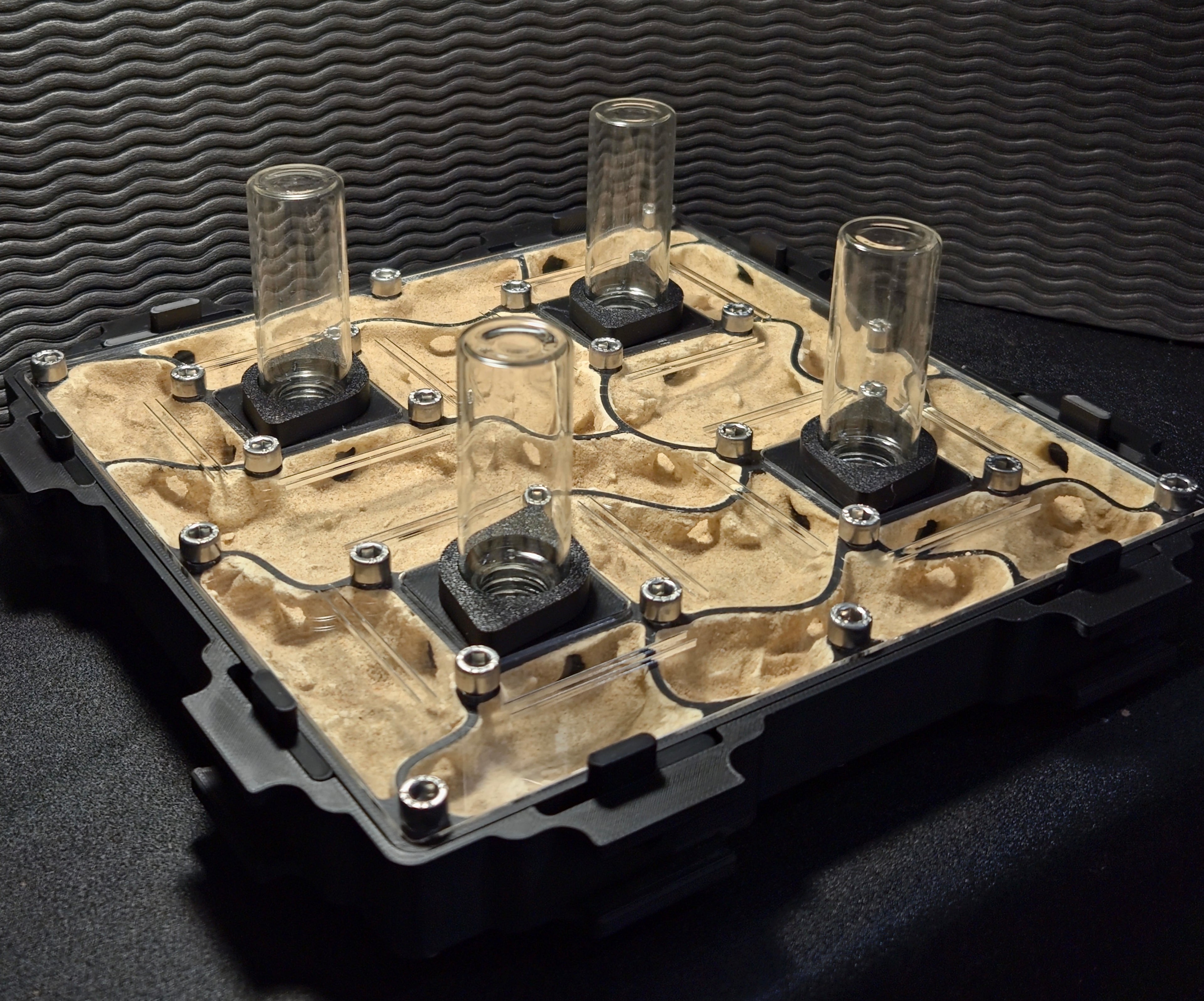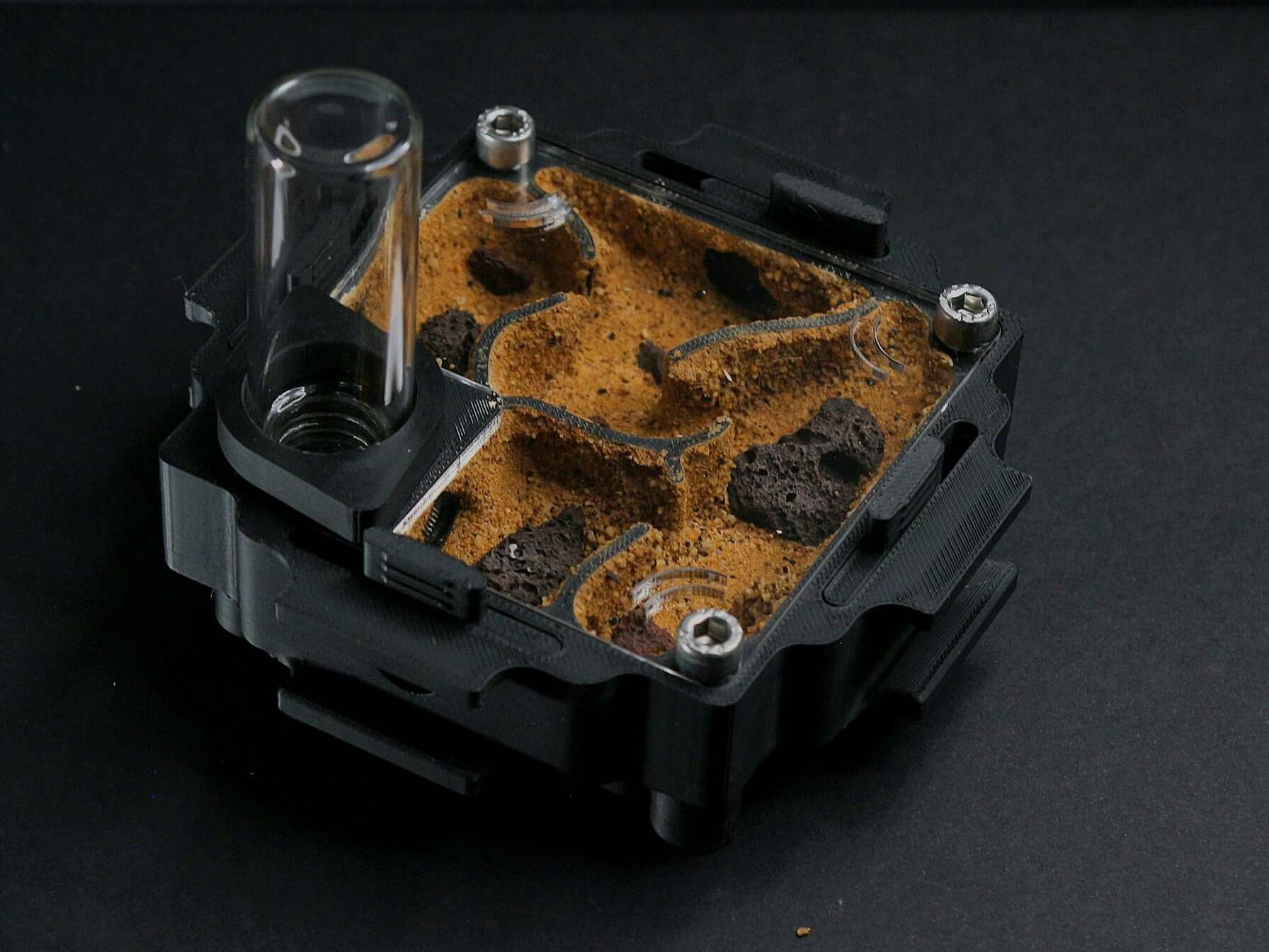Pheidole pallidula — Guía Completa de Cuidados
La Pheidole pallidula es una de las especies más comunes en el sur de Europa y zonas mediterráneas, fácilmente reconocible por su marcado dimorfismo entre obreras y soldados. Es una especie activa, de crecimiento rápido y con gran capacidad de adaptación a entornos artificiales.
Destacan por formar colonias con cientos de obreras en pocos meses. Las obreras menores realizan la mayor parte del trabajo, mientras que las major o soldados actúan como defensa y apoyo en tareas de manipulación de alimento. Su cría es sencilla y su tamaño reducido permite mantenerlas en espacios pequeños sin complicaciones.
Parámetros de cría recomendados
- Temperatura ideal: 22–28°C (toleran bien hasta los 30°C)
- Hibernación: Opcional. Se recomienda un periodo de inactividad a 15 °C durante 1–2 meses
- Humedad: Media-alta. Evita la deshidratación, sobre todo en etapas jóvenes
- Dieta: Insectos (tenebrios, gammarus, drosophila) y azúcares diluidos en agua (miel, aguamiel, néctar)
- Hábitat inicial: Tubo de ensayo o reinero starter
- Dificultad: Fácil, adecuada para criadores principiantes o intermedios
Consejos de cuidado
- Evita exponerlas a vibraciones constantes o luz directa prolongada, ya que son sensibles al estrés.
- Retira los restos de alimento proteico en menos de 24 h para evitar moho y ácaros.
- Los soldados aparecerán cuando la colonia supere las 30–50 obreras; no fuerces este proceso.
- Utiliza bebederos pequeños o algodones empapados para mantener una hidratación constante sin inundaciones.
- Prefieren espacios cerrados y oscuros, por lo que es recomendable cubrir el hormiguero con tapa de oscuridad total.



























